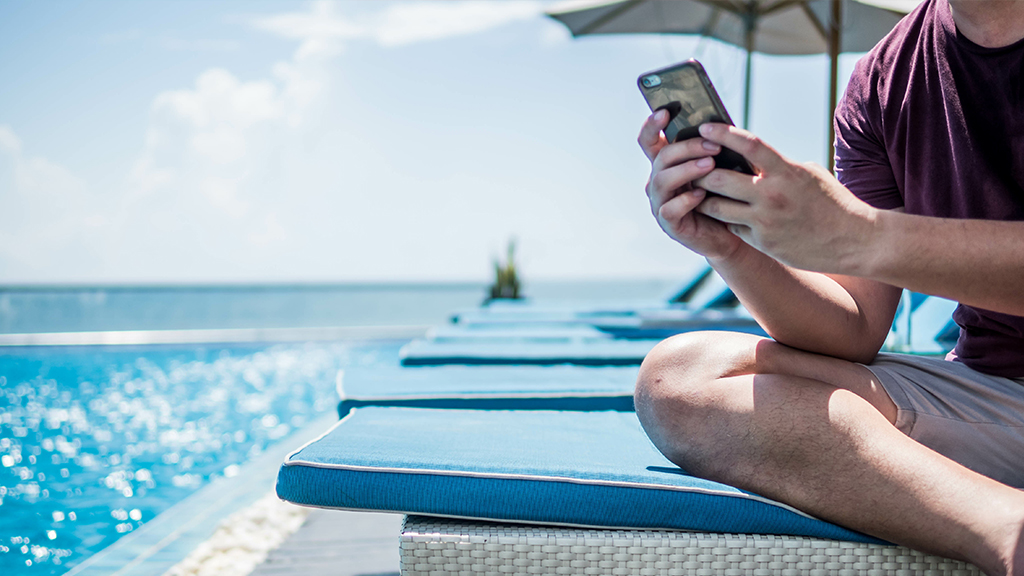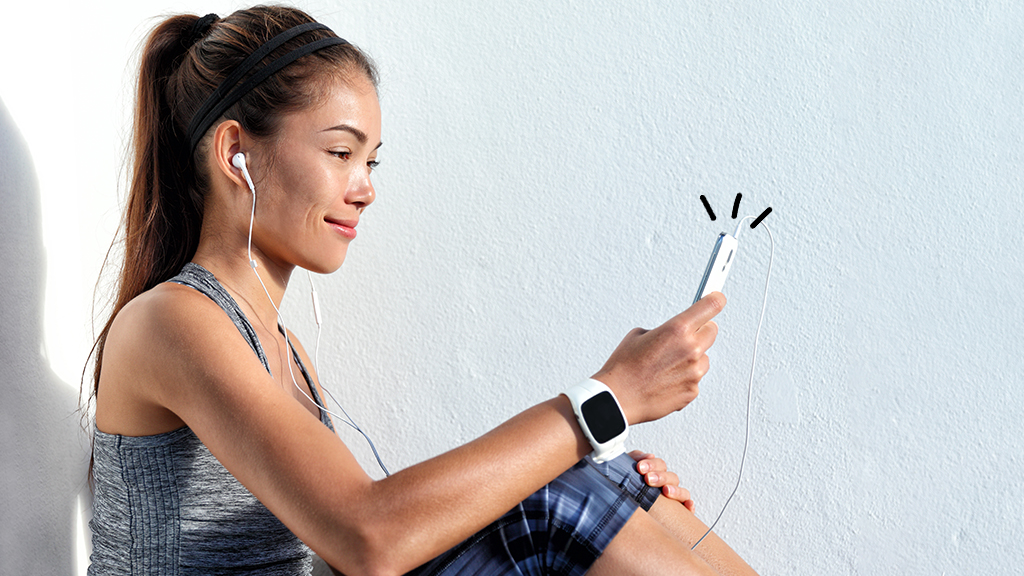There's a saying that goes, "the best camera is the one you have with you." More than likely, that camera is your smartphone. Today's phones have pretty remarkable photo capabilities, with resolutions of up to 12 megapixels and built-in stabilizers that can help minimize blur from shaky hands. Whether it's a pic of your travels, your pet, or what you had for lunch, smartphones have become our main instrument for capturing memorable moments.
Asurion Experts help our millions of customers get the most of the tech they love and rely on. Here they share their tips on how to take the best pictures on your smartphone, how to upload and transfer them to your other tech devices, and how to back up your phone photos.
How to capture the best photos with your phone
Use the rule of thirds to take an amazing picture
Great photo composition starts with something called the rule of thirds. A tried and true photography technique, the rule of thirds divides your photo into parts to help you create an interesting frame for your subject. Here's how it works:

- Use your phone's grid feature. If you're using an Android phone, open up your camera then click on the Settings icon. From there, toggle on Grid (may also be called Grid Lines). If you're using an iPhone, go to Settings > Camera > toggle on Grid. Now, when you open your camera, you'll see a screen that looks like a tic-tac-toe board.
- Set up the frame. Use the grid lines as a guide to help you position the most important person or object in the photo. Either place your subject on one of the lines or on the areas where the lines intersect.
Now you're all set to snap your photograph masterpiece!
How to avoid dark or washed out phone photos
A great photo is all about lighting. The simplest way to manage the amount of light in your photo is to adjust your camera's exposure. You can manually control the exposure by doing the following:
- Tap on the subject of your photo.
- When the yellow sunshine icon appears, use your finger to move the slider to increase or decrease the amount of light in your photo.
Another option to ensure proper lighting and crisp focus is to use the AE/AF Lock feature. AE stands for Auto Exposure, while AF stands for Auto Focus. Here's how to use this feature:

- Set the focus point of your photo by tapping the subject manually on your screen.
- Next, press and hold the subject in your photo until the AE/AF Lock icon appears, and then release your finger. Doing so locks in your photo settings, keeping the camera's autofocus system from kicking in if something was to move within your scene.
- AE/AF Lock will remain locked even after you've taken your photo, making it easy to take multiple pics without having to redo your settings for each shot. To turn the lock off, just tap on another part of the screen.

Tech help at your fingertips
Get your tech questions answered now with our live expert support.
Best free photo editing apps
Have you ever taken a photo thinking that the lighting and composition were great, only to review it and find out it didn't turn out quite how you hoped? It happens to all of us. Luckily, there are apps that help you to easily create your photograph masterpiece. Here are two of our favorites:
Snapseed
Whether you're a beginner or a pro, Snapseed is a fantastic, easy-to-use photo editing app. With nearly 30 different tools and filters available, you can touch up everything from lighting and cropping, to removing unwanted elements from your photo with the Healing tool.
Pixlr
In addition to making quick image adjustments, Pixlr can be used to draw on your photos and add text, and make photo collages. With plenty of editing options, it's a great tool for both iPhone and Android users.
How to back up the photos on your phone
The most important thing you need to know about taking photos with your phone? The importance of backing them up. Having your photos set to automatically back up to the cloud or regularly downloading them to your computer will ensure you never lose any of your precious memories in case your phone is ever lost, stolen or damaged.
For information on how to back up your photos, check out the following guides:
- How to back up your Android phone
- How to back up an iPhone
- How to transfer photos from an iPhone to a computer
How to save your photos to the cloud
Backing up your photos in a folder on your computer's hard drive is a great idea, but there is always the possibility that your computer could get damaged. That's why we recommend backing up to a cloud-based service like iCloud or Google Photos. Learn more about the best cloud storage options.
Can I use Google Photos on my iPhone?
Good news! Yes, you can. Download the app from the App Store.

Google Photos organizes your photos and backs them up in a secure online location. This makes them accessible from any device, whether iOS or Android, and if you ever move to a new phone, your photos and videos will automatically come along with you.
Once your photos and videos are backed up, you'll also be able to free up some valuable storage space on your phone.
How to back up and sync your photos with Google Photos
Backing up your phone photos to Google Photos is simple. Before we get started, make sure your phone is connected to Wi-Fi and plugged in, since this process can use up a lot of battery and data.
- Download and open the Google Photos app. Sign in or create a new account.
- Click on your profile picture in the top-right corner to open Settings.
- Click on Backup. If your device is not already set to automatically back up, choose Turn on backup.
- To choose backup quality, select either Original or Storage Saver and hit Confirm. Storage saver means your photos will be compressed to a lower resolution and you'll enjoy unlimited free storage. Original quality means they'll remain in their original resolution, but you'll have a limited amount of free storage.
- If you want backups to occur even when you're not on Wi-Fi, select Mobile data usage. There you can choose a daily limit for data usage to backup your photos, plus turn on or off the ability to back up videos using your mobile data and whether your device can back up while roaming.
Now you can enjoy peace of mind knowing your photos and videos are safely backed up and accessible from any device!
Tried these steps and still need help? We got you. Get your tech problem solved when you call or chat with an expert now.





